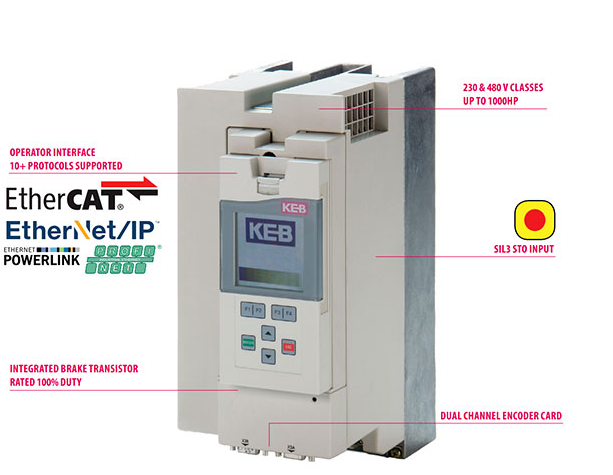Posted on 14th Nov 2023

A Variable Frequency Drive (VFD) "KEB F5 Drive" is a device used to control the speed and torque of an electric motor by adjusting the frequency and voltage of the power supplied to the motor. Using VFDs can lead to significant energy savings in various applications. CM Industry Supply Automation share are some ways in which VFDs can help save money on energy consumption:
VFDs allow for precise control of motor speed. In many applications, motors do not need to run at full speed all the time. By adjusting the speed according to the actual requirements of the process, you can avoid energy waste associated with running motors at constant high speeds.
VFDs such as KEB F5 Drive enable soft start and stop of motors, reducing mechanical and electrical stress during the start-up and shutdown phases. This not only extends the lifespan of the equipment but also reduces the energy demand during these periods.
VFDs provide the flexibility to optimize the process by adjusting the motor speed based on the specific requirements of the application. This ensures that the motor operates at the most energy-efficient speed for the given conditions.
In some applications, VFDs can be configured to regenerate energy back into the electrical system when the motor is decelerating. This regenerative capability can be particularly useful in applications where there are frequent starts and stops.
Many modern VFDs such as KEB F5 Drive available at CM Industry Supply Automation come equipped with energy monitoring and reporting features. These tools help you analyze energy consumption patterns, identify inefficiencies, and make informed decisions for further optimization.
VFDs can improve power factor by adjusting the phase relationship between voltage and current. A better power factor results in reduced losses in the electrical distribution system, leading to improved overall energy efficiency.
VFDs can adapt to changes in load conditions, adjusting the motor speed accordingly. This ensures that the motor operates at the most efficient point on its performance curve, minimizing energy consumption.
VFDs allow for demand-based operation, where the motor runs at the required speed during peak demand periods and operates at a reduced speed during off-peak times. This can result in significant cost savings, especially in applications with varying load profiles.
Implementing VFDs in systems with variable loads or processes can result in substantial energy savings, making them a cost-effective investment in the long run. However, it's essential to carefully assess the specific requirements of your application and work with qualified professionals to properly size, install, and configure the VFD system for optimal performance and energy efficiency.